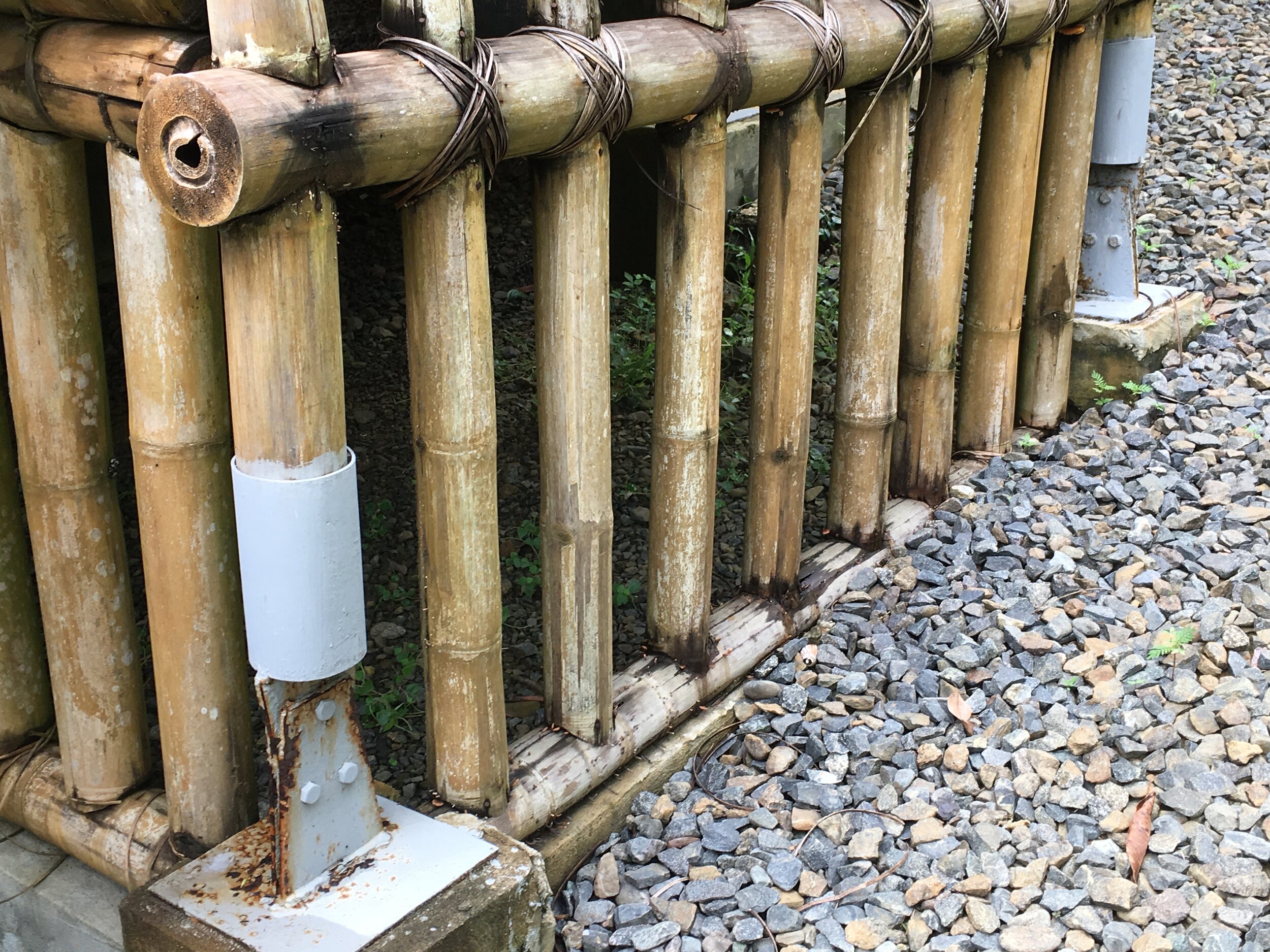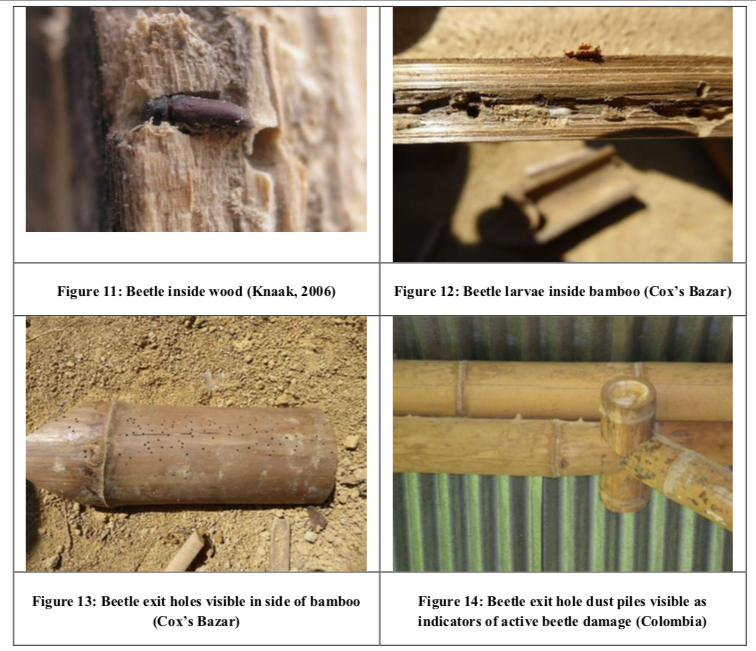How long can bamboo last?
Bamboo is surpassing its generational stigma in Central/South America and Asia as a cheap or free timber substitute often associated with the lower rungs of society. Better bamboo buildings that are being designed and constructed for schools, resorts and homes in the tropical and semi tropical zones where it thrives have begun to elevate bamboo and bring it away from its reputation as a temporary and last resort material to use.
Many will promote bamboo for its strengths and advantages but not many will willingly talk about its vulnerability - how bamboo can fail, just like any other building material. The question that many bamboo people often get asked is this - how long does bamboo actually last?
My answer to such a wide question is that bamboo can last between less than 6 months to more than 30 years, dependent on a list of criteria which I will provide below.
If we harvest a raw bamboo pole from the clump and stick it into the ground to make a fence post say, it can last up to 6 -9 months before it rots and collapses.
If we used a bamboo pole, unprocessed or treated with chemicals, and build with it the pole may be attacked by insects, fungus and rot and may last for under 2 years.
If we treat the bamboo pole with chemicals that repels insects and rot, coat it with a protective finish and design to keep the pole protected from the rain and sun, it can last for more than 20 - 30 years.
Combined with regular inspection, maintenance and occasional replacement (it is comparatively easy to replace a bamboo pole with a new one when compared to replacing or repairing steel, timber or concrete) it can probably last more than 30 years.
(Note that the above criteria is applicable to a hot and wet tropical environment ie. generally between latitudes 30 degrees north to 30 degrees south)
The table below from an excellent paper on bamboo durability by Sebastian Kaminski (well worth a read) illustrates the point:
Technical Guidance Note 03: Durability and Treatment of Bamboo in Cox's Bazar. Rohingya Refugee Camps and Sites, Cox's Bazar Region, Bangladesh REP/079032-30/S0001 Issue 01 | 31st October 2018 - Sebastian Kaminsky, Arup.
Technical Guidance Note 03: Durability and Treatment of Bamboo in Cox's Bazar. Rohingya Refugee Camps and Sites, Cox's Bazar Region, Bangladesh REP/079032-30/S0001 Issue 01 | 31st October 2018 - Sebastian Kaminsky, Arup.
The following are some other factors that affect the durability of bamboo. Bamboo can look good and last for many generations. It can and will become a material that will challenge the many common building materials of today if given the care and respect that it needs.
Choose a suitable species of bamboo that is known to be used for construction. Check with locals and builders in the locality.
Ensure that the bamboo has been harvested and treated correctly. Improper harvesting can lead to cracking, slumping and loss of strength. Harvesting at wrong times result in higher starch content in the bamboo attracting beetles, termites and fungal (rot) attack.
The harvested bamboo has to be treated with chemicals. A mix of boron and boric acid is a reliable method. Other traditional methods are not as effective and may not give adequate protection to the bamboo.
The surrounding climate plays a crucial role in the bamboo’s durability. Long and constant exposure of bamboo to wet and damp conditions should be avoided as this is will lead to dampness and mould. Long dry seasons can also cause the bamboo to crack or move if it is too exposed.
Hence, the placement of bamboo building needs to be considered - locate buildings where there is airflow and not in wind shadow zones. Orientate and locate buildings to provide a balanced supply of sunlight with some shade.
Use qualified designers and constructors. Look at examples of their work to check for exposed bamboo structural members and facades.
What about coatings and how they can ‘protect’ or ‘extend’ bamboo life? It is critical to design and construct for durability rather than relying on applying ‘make-up’ to protect your bamboo. A light coating of bamboo does enhance its look and also protect it to a certain extent from knocks and abrasion.
The bamboo buildings that I am familiar with in Bali are more than 12 years old and they do not show significant wear and tear or structural damage, even after a couple of earthquakes and many alternating wet and dry seasons. I believe that this is because they have been designed for durability, well cared for and regularly maintained.
There are bamboo buildings in Japan and elsewhere that are more than 100 years old. I have not been able to locate these examples. Anyone who has a firm record of these, please share and point them out for us.
Without the correct harvesting and treatment, bamboo can and will deteriorate quickly within months. With the right approach to design and construction and with maintenance and post construction care, bamboo can last for ages, perhaps for a lifetime!











